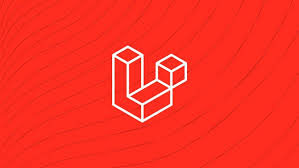White Paper: Laravel MVC Framework for Web Application Design
Introduction
In today's fast-paced digital landscape, web applications have become indispensable for businesses of all sizes. A robust and efficient framework is essential for building scalable and maintainable web applications. Laravel, a popular PHP framework, offers a comprehensive set of tools and features that make it an ideal choice for web application development.
Understanding Laravel MVC Framework
Laravel is a model-view-controller (MVC) framework, which separates the application into three distinct components:
-
Model: Represents the data and business logic.
-
View: Handles the presentation layer and user interface.
-
Controller: Acts as the intermediary between the model and view, handling user requests and responses.
This separation of concerns promotes code organization, reusability, and maintainability.
Key Benefits of Using Laravel
-
Rapid Development: Laravel provides a rich ecosystem of packages and tools that can significantly speed up development time. Features like Blade templating engine, Eloquent ORM, and Artisan command-line interface streamline common tasks.
-
Scalability: Laravel is designed to handle high traffic and large-scale applications. It offers features like caching, queuing, and session management that help improve performance and scalability.
-
Security: Laravel incorporates built-in security features, such as cross-site scripting (XSS) and cross-site request forgery (CSRF) protection, to safeguard your application from vulnerabilities.
-
Community and Support: Laravel has a large and active community of developers, providing extensive documentation, tutorials, and forums for support.
-
Modularity: Laravel's modular architecture allows you to extend its functionality with third-party packages, making it adaptable to various project requirements.
Application of Laravel in Web Application Design
-
Routing: Laravel's routing system provides a flexible way to define routes and map URLs to specific controller actions.
-
Database Interactions: Eloquent ORM simplifies database interactions, making it easy to query, create, update, and delete data.
-
Templating: The Blade templating engine offers a clean and expressive syntax for creating dynamic views.
-
Authentication and Authorization: Laravel provides built-in authentication and authorization features, making it easy to implement user registration, login, and access control.
-
API Development: Laravel is well-suited for building RESTful APIs, enabling seamless integration with other applications.
-
Testing: Laravel includes testing tools to ensure code quality and maintainability.
Real-World Examples
-
Social Media Platforms: Laravel has been used to build popular social media platforms like Reddit and Stack Overflow.
-
E-commerce Websites: Many successful e-commerce websites, such as Etsy and Viget, are powered by Laravel.
-
Enterprise Applications: Laravel has been adopted by large enterprises for building complex business applications.
Conclusion
Laravel offers a powerful and versatile framework for building web applications. Its robust features, active community, and scalability make it an excellent choice for developers of all levels. By leveraging Laravel's capabilities, you can create high-quality, efficient, and maintainable web applications.
References
Note: These are general references that can be used for a white paper on the Laravel MVC framework for web application design. You may need to replace the placeholders with specific citations based on the sources you've used.
Books
-
Spatie, Freek van. Laravel: Up and Running. O'Reilly Media, 2021.
-
McFarland, Jeffrey. Laravel Development Essentials. Packt Publishing, 2021.
Articles and Papers
-
Laravel Documentation. Laravel Documentation. https://laravel.com/
-
Medium. Why Laravel is the Best PHP Framework. https://medium.com/tag/laravel
-
Stack Overflow. What are the advantages and disadvantages of using Laravel? https://stackoverflow.com/questions/35456951/codeigniter-and-laravel-frameworks
Online Resources
-
Laravel News. Laravel News. https://laravel-news.com/
-
Laracasts. Laravel Tutorials. https://laracasts.com/
Additional Tips:
-
Cite specific sections or pages where you've referenced information from the sources.
-
Use a consistent citation style (e.g., APA, MLA, Chicago) throughout your paper.
-
Verify the credibility of your sources to ensure their accuracy and relevance.
-
Consider adding more recent publications if available to reflect current trends and advancements in Laravel and web development.
By following these guidelines, you can create a well-referenced and informative white paper on the Laravel MVC framework for web application design.



